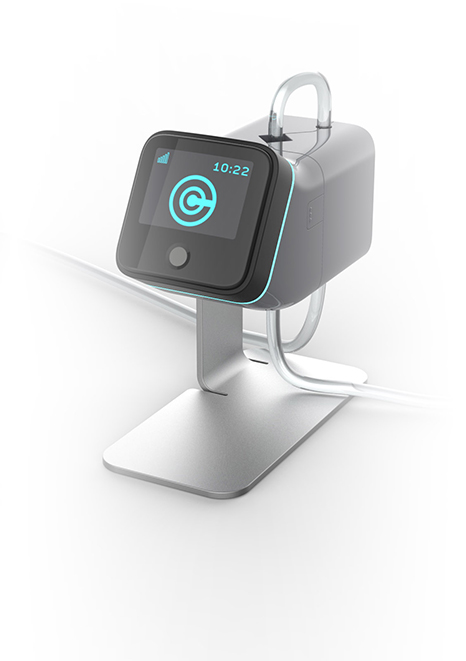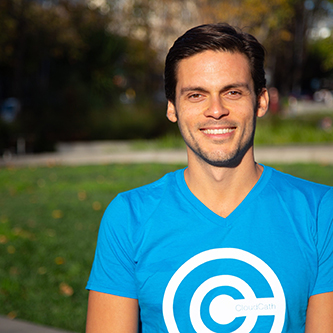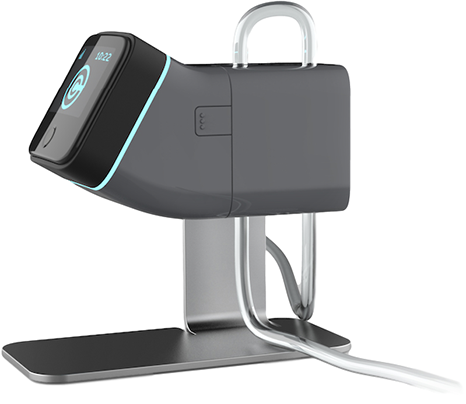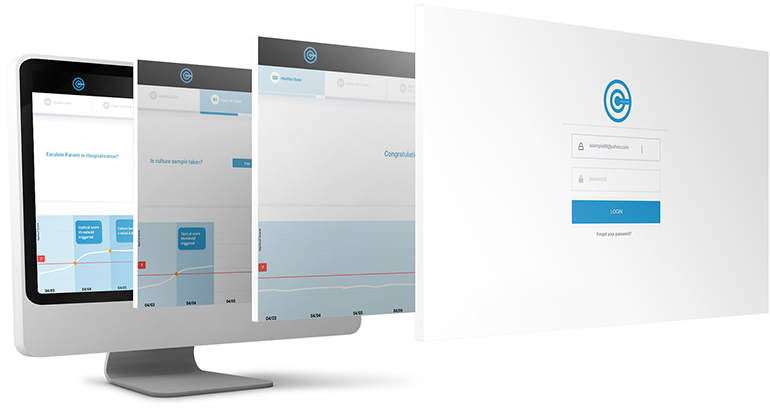
CloudCath, a medtech company based in San Francisco, has created the CloudCath system, a remote monitoring technology that provides clinicians with data on the spent dialysate fluid of at-home peritoneal dialysis patients. CloudCath is incorporated into the drain line of peritoneal dialysis systems, and wirelessly transmits data to the cloud, with proprietary algorithms then highlighting issues, such as infection, to clinicians.
At present, abnormalities with peritoneal dialysis patients may not be flagged in a timely manner. For instance, patients are advised to check their dialysate using the “newspaper test,” whereby if newspaper text cannot be clearly read through a bag of dialysate then patients are encouraged to seek medical attention, as the dialysate may be infected. This is clearly suboptimal, and not only because printed newspapers are not as common as they used to be, often resulting in missed or late identification of potentially serious issues.
This latest technology is intended to get ahead of such problems and help to increase the safety of at-home peritoneal dialysis. CloudCath recently announced a partnership with American Renal Associates, an outpatient dialysis provider, with the aim of conducting a pre-market clinical study of its product in peritoneal dialysis patients.
Medgadget had the opportunity to speak with Aly ElBadry, CEO and co-founder of CloudCath, about the company’s technology and upcoming study.
Conn Hastings, Medgadget: Please give us an overview of peritoneal dialysis and the patients who avail of it.

Aly ElBadry, CloudCath: Peritoneal dialysis (PD) removes waste from the blood when kidneys aren’t able to do so. This procedure filters the blood in a different way than the more common blood-filtering procedure known as hemodialysis. During the process a cleansing fluid flows through a catheter into part of the abdomen, and the lining acts as a filter, removing waste products from your blood. After a set period of time, the fluid with the filtered waste products flows out of your abdomen and is discarded. Patients using PD must be able to care for themselves at home or have a reliable caregiver.
Medgadget: How common is it for patients to undergo dialysis at home? Is this typically self-administered, or does a medical professional attend?
Aly ElBadry: Approximately 12.5% of dialysis patients in the US perform it at home. In 2019, the White House announced an executive order proposing that 80% of new patients with end-stage renal disease (ESRD) be treated with either kidney transplantation or home dialysis by 2025. Peritoneal dialysis is self-administered on a nightly basis with the help of medical equipment, initiating a process that is called an automatic cycle, while the patient sleeps. Patients can safely do peritoneal dialysis at home by him or herself, sometimes assisted by family members or friends and other partners, but often independently.
Medgadget: How did the idea for the CloudCath System come about?

Aly ElBadry: The idea of CloudCath came from our passion for chronic disease management and our interest in bringing innovative software solutions to unmet areas of need. The co-founders, Eric Yu and myself, have backgrounds to merge these worlds and together we created this unique solution.
Medgadget: Please give us an overview of the system, and how it works.
Aly ElBadry: CloudCath’s device seamlessly integrates into the patient’s drain line, monitoring the spent dialysate fluid on every dialysis cycle by measuring and quantifying the fluid properties remotely from the patients’ home. The data are transmitted to the CloudCath cloud-based infrastructure in real time, where proprietary data algorithms notify healthcare providers when there is a potential complication escalation. Through CloudCath’s remote monitoring platform, healthcare providers log in and access an unprecedented level of real-time data from their patients throughout their treatment, aiding in treatment decision management.

Medgadget: How do you think the system could change the way dialysis is administered? Do you envisage a time where nearly all patients can undergo peritoneal dialysis safely at home?
Aly ElBadry: Current standards of care rely on visual detection to identify infection origination, known as the “newspaper test.” If patients cannot read a newspaper or written text print through a collection bag of spent peritoneal dialysate, they are advised to seek medical attention – a strategy that results in late identification of infection and possible complications that can lead to hospitalization and potentially a catheter removal procedure, limiting the patient’s treatment modality to the less convenient and more expensive Hemodialysis option.
CloudCath’s Medical Advisory Board projects that the technology could drive a 75% reduction in infection-driven hospitalizations – potentially saving thousands of lives, based on existing mortality rates, and reducing the U.S. healthcare system’s annual spend by as much as $ 2.6 billion. Furthermore, in line with the current initiative, in order to increase the adoption of peritoneal dialysis, the safety and security of remote monitoring is key to additional patient choosing peritoneal dialysis.
Medgadget: Please give us an overview of your planned pre-market clinical study with the American Renal Associates (ARA).
Aly ElBadry: The US-based, pre-market clinical study, ARA will evaluate the use of CloudCath’s System by PD patients. The clinical study endpoints from our work with ARA are critical to our clinical evidence generation pipeline and will help drive future product development, regulatory activities, reimbursement strategy and market adoption.
Medgadget: Do you have any other applications planned for the technology?
Aly ElBadry: CloudCath is developing a remote monitoring platform. Although peritoneal dialysis is the first area of unmet need, we understand and are actively developing how CloudCath’s technology can provide remote monitoring capabilities for monitoring all catheter-based treatments.

